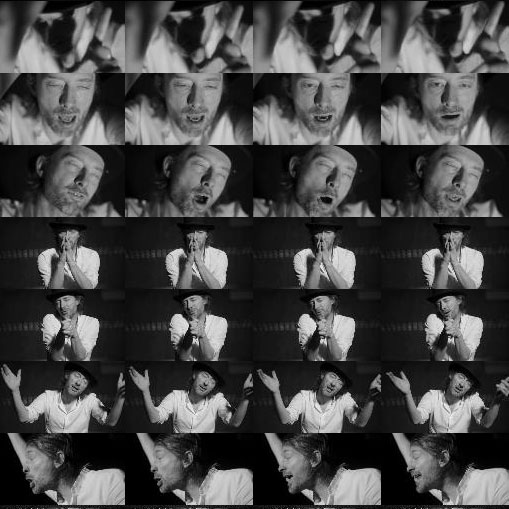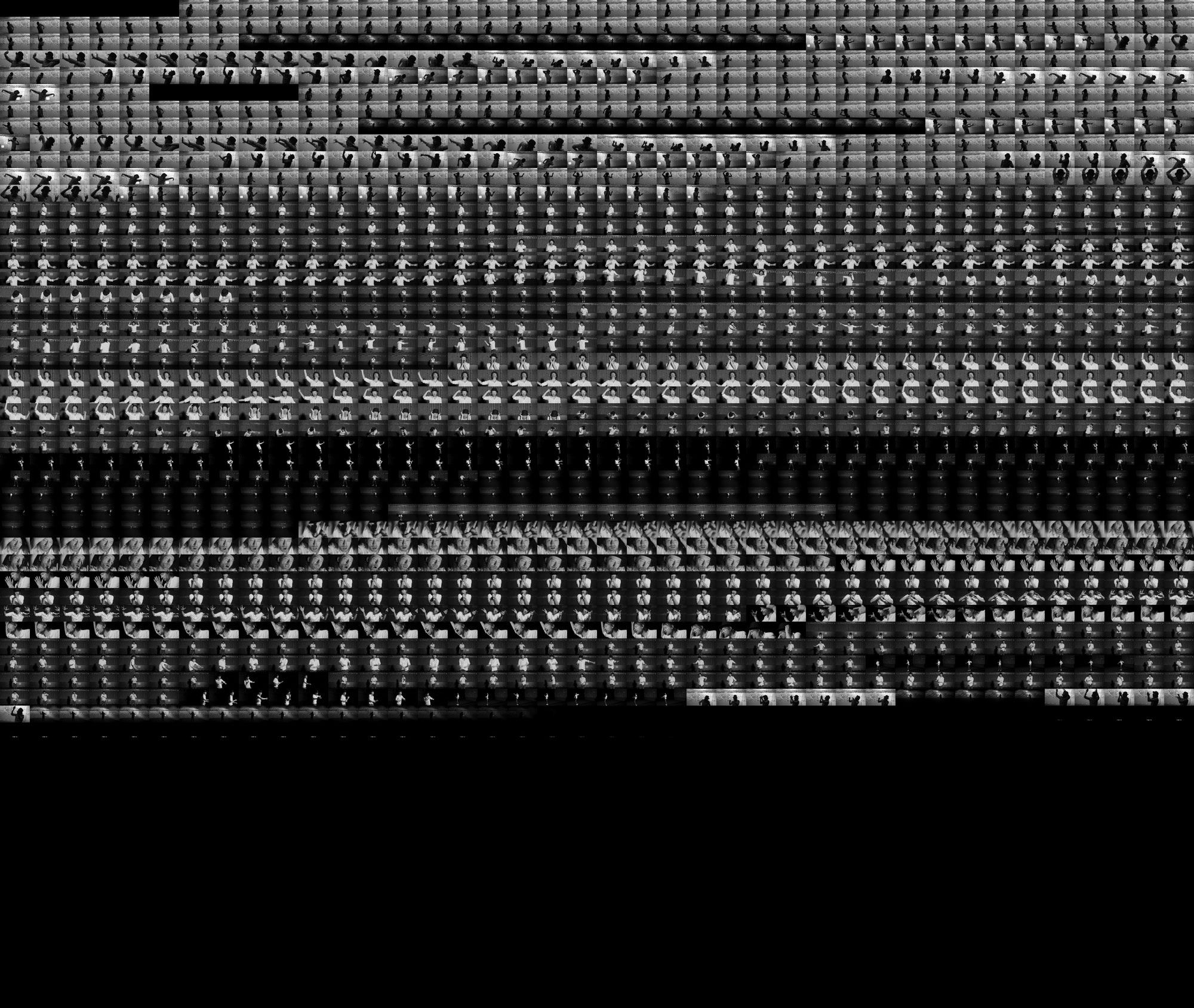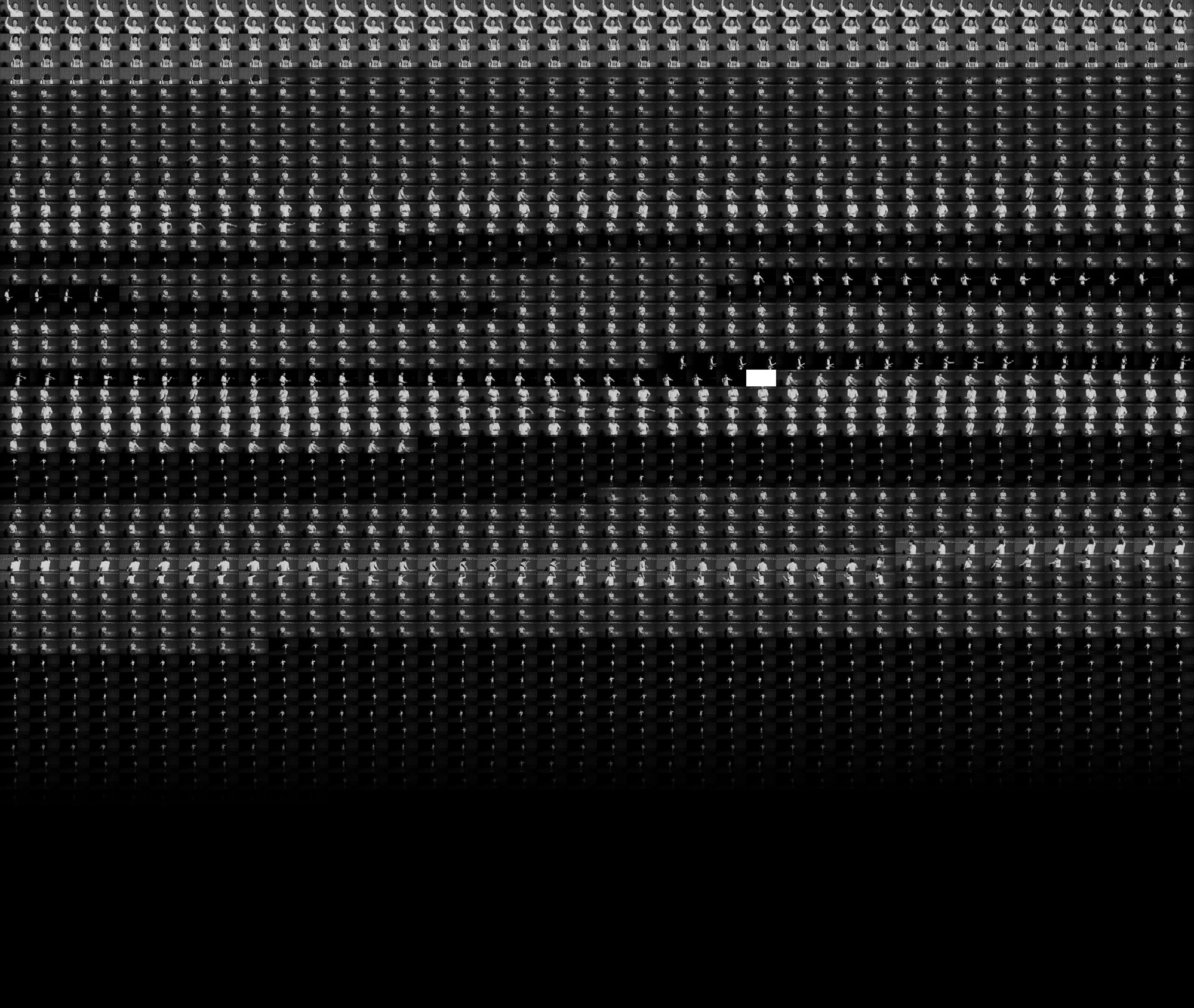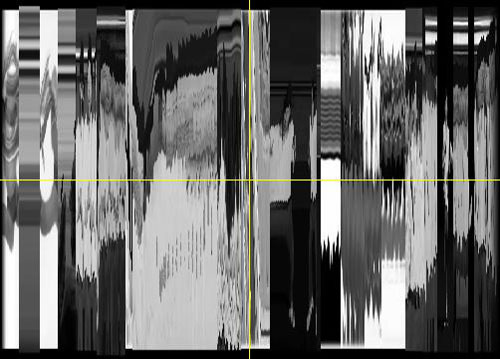Research on Remix and Cultural Analytics, Part 2

Image: detail of video montage grid of Radiohead’s Lotus Flower. Larger images of this montage and others with proper explanation are included below.
As part of my post doctoral research for The Department of Information Science and Media Studies at the University of Bergen, Norway, I am using cultural analytics techniques to analyze YouTube video remixes. My research is done in collaboration with the Software Studies Lab at the University of California, San Diego. A big thank you to CRCA at Calit2 for providing a space for daily work during my stays in San Diego.
This is part 2 of a series of posts in which I introduce three case studies of YouTube video remixes. My first case study is the Charleston Style remixes.
Radiohead uploaded their original official music video on February 16, 2011. The video consists of Thom Yorke, the band’s lead singer, dancing and singing in an empty garage-like space. The footage includes close-ups, mid and long shots of Yorke improvising his dance. When viewing the original video it is evident that Yorke’s quirkiness in part is the reason why the footage was a readymade for a viral meme. The remixes began to appear, just two days after the original was uploaded, on February 18. The range of songs that replaced Radiohead’s original include well known musical classics from Zorba the Greek, pop songs from the Venga Boys, as well top ten hits by Lady Gaga, among others. Below are some of the videos analyzed.
This remix consists of footage taken from the original Radiohead video, which was re-edited to match the song “All the Single Ladies” by Beyonce, uploaded on February 18, 2011.
This video is titled “Thom Yorke Goes Bananas.” In this case, the video footage of Lotus Flower was selectively re-edited to match a samba composition. It was uploaded on February 18, 2011.
This video is titled “Thom Yorke Does the Macarena!” In this case, the video footage of Lotus Flower was selectively re-edited to match the Macarena song and video. It was uploaded on February 18, 2011.
Following the method of analysis of my first case study on the Charleston Style, I first looked at the montage of the videos.

View 2000 px wide version.
This is the grid montage of the original video by radiohead.

View 2000 px wide version
This is the video grid montage of “All the Single Ladies”

View 2000 px wide version
This is the video grid montage of “Thom Yorke Goes Bananas!”

View 2000 px wide version
This is the video grid montage of “Thom Yorke Does the Macarena.”
When viewing these grids it becomes evident that the remixers, from the very beginning, took the liberty to edit the footage selectively to match particular songs. This is a different approach in contrast with the Charleston remixes, which, for the most part, leave the video footage intact. The exception is the occasional time adjustment to match the beat of a song.

View 2000 px wide version
When slicing the video frames, it becomes clear which video sections are remixed. Compare the slices of the original video (above) with the slices of the three other videos, which follow below.

View 2000 px wide version
These are slices of “All the Single Ladies”

View 2000 px wide version
These are slices of “Thom Yorke Goes Bananas!”

View 2000 px wide version
These are slices of “Thom Yorke Does the Macarena.”
The slice visualizations have been adjusted to fit this blog’s design. Many of the remixes are much shorter than the original video by Radiohead, this is because the footage is re-edited to match the length of the songs selected. One of the shortest is the Macarena remix, which is just over a minute.
As mentioned before, this is my second case study. After the introduction of my third case study, I will compare the three memes in order to evaluate the patterns of the remixes.









